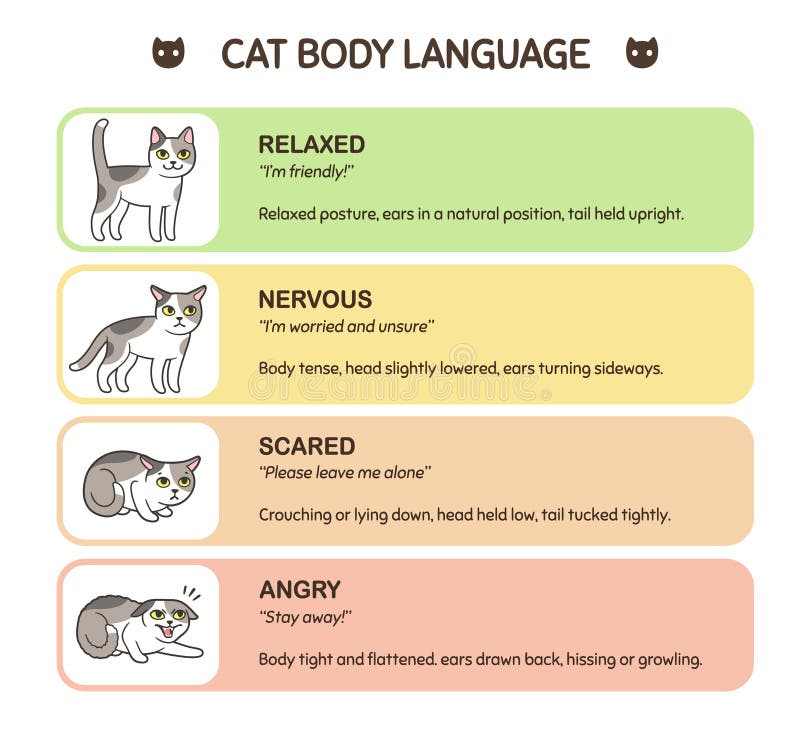

When your cat is genuinely curious and uptight, his ears can be pricked in front.Īs he follows a word your cat’s ear jerk may disperse, but quickly the ears in Qatari can become thin and introduce uncertainty. Your cat’s ears are probably comfortable when he leans forward and slightly forward. The ears are not just for listeningĪ cat’s ear refers to information. And the laid-back tail that we attached to Halloween cats isn’t just trying to make your kitty look scary – it’s a sign that he’s actually intimidated. If your cat is concerned about a situation, he can tuck his tail down or around his body if he lies down. This type of movement is a sign that he is overwhelmed by the situation and is not enjoying it. When your cat becomes agitated, he or she can remove its tail in a way that is faster and more powerful. Signs of interest in a slightly moving, twitching, wagging tail You will see when your cat is intensely watching a bird through the window or playing with a toy especially before jumping to the right and biting the toy.Īlways pay close attention to the moving tail – this can help give you an idea of a cat’s degree or concern in any situation. When she’s happy, she can push it slightly or keep it high in front of the curl. When a cat is satisfied, he or she usually sticks its tail behind it, slowly. It is important to have a good idea of your cat’s average disposition, measured by the height at which he carries his tail, to judge when he is feeling anxious or restless. Your cat’s tail can help you to feel comfortable and comfortable in a given situation. There are five common ways your cat talks to you and when he or she is trying to do so. Once you know what to watch out for, you will find that your cat is talking to you almost constantly. Cats can also send mixed signals if they are unsure about a situation – so your cat’s eyes and ears may say “I am relieved” but his tail and body texture may tell you otherwise. It is good to look at multiple signals to help determine how your cat is feeling. Although some behaviors may serve as a clue to your cat’s state of mind, none of them should be interpreted separately. To help avoid stress and conflict, it is important that you learn to listen to your cat. Although purging is usually a symptom of satisfaction, sometimes it can actually be a symptom of your symptoms. If they are under pressure, it is important to make sure that they are hidden somewhere or elevated. Licking lips after eating is normal behavior, but other times it may be a sign of feeling ill or the stress they are feeling. If your cat shows this behavior, it is important to make sure that they are somewhere to hide or get up. If you are lucky your cat will do the same! Symptoms of crisisįlattened ears and/or bodies are a sign that your cat is scared and stressed. To show your cat that you are comfortable in their presence, you can relax and lean your head slightly towards them. This is not an invitation to rub their belly! Most cats will see this as a betrayal of faith and can take revenge with paws and teeth! A little head rub is a good way to respond well.ĭuring shows that your cat is either satisfied or looking for attention.

If your cat is walking around and uncovering its tummy, this is a sign of greeting and trust. Although this is kind of a greeting, your cat is doing it because you smell strange to them and they want to get to know you more. Rubbing people or furniture around the corner – especially when you’re back home – is a way to identify your cat’s scent. Make sure you accept their greetings and give them some noise. Normal cat body languageĪ cat is approaching you with your tail pointing upwards, greeting you often, when they come home or when they want your attention.
CATS BODY LANGUAGE HOW TO
You can even know how to respond to them! The body language of cats is important for the pet lover. Body language of the catĬats are fine and complex in their communication methods, but taking the time to learn their body language can help strengthen your relationship with your cat. This article will be sharing some fresh though about the body language of cats. Since signals of final communication are easily misread – or completely missed – cats are often incorrectly labeled as being temperamental and temperamental. Unfortunately, this means that the cat can be rejected as trivial until it progresses to more distressing signs, as they try to fight or flee. Warning cats is not always perfectly clear to the untrained eye. When anybody can read the body language of cats, s/he can handle the cute pet well. body language of cats tells about the type, situation, and temperament. It can be difficult for us to accept the subtle formulas that indicate when our cats feel upset or anxious.


 0 kommentar(er)
0 kommentar(er)
